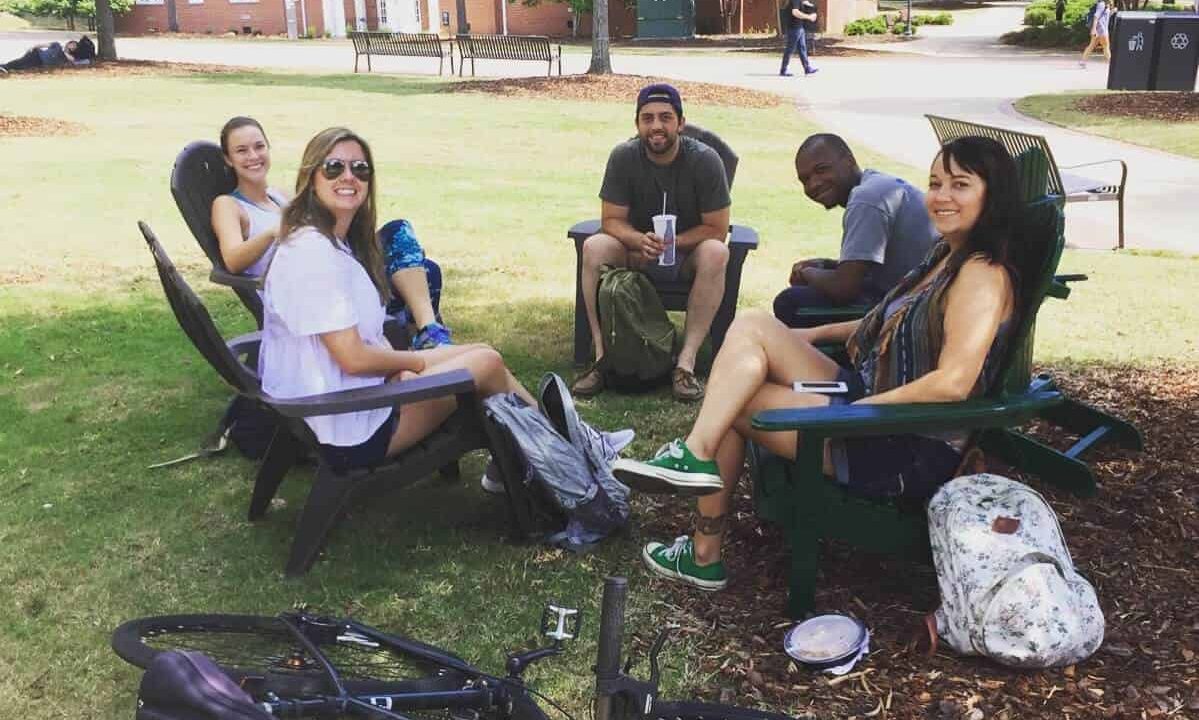Auburn Chair Project

Pull up a chair. Have a seat. Create community.
Can something as simple as placing chairs around campus improve the quality of social life? That’s what Magdalena Garmaz’s ENVD 4010 “Elements of Design Thinking and Visual Communication” class set out to discover. The Auburn Chair Project studied whether the introduction of a simple, inexpensive, and movable element—a chair—can improve the quality of life in the built environment, specifically, the Auburn campus.
The class of twenty-two students worked in groups on different aspects of the project implementation and review of its impact. They researched social and physical aspects of chairs, as well as precedents. A project in Harvard Yard in which 100 chairs were placed in a public space was the most comparable to what ACP intended to do. One group studied pedestrian traffic patterns on Auburn’s campus because areas in proximity to foot traffic intersections are good places to sit. They did a seating inventory and discovered that there are only eight movable chairs on campus—the rocking chairs on Cater porch. The rest are attached to tables.
Sixteen inviting Adirondack chairs (six wooden and ten plastic) were strategically placed in high foot traffic intersection areas. Small groups of chairs were placed in shady spots near Cater Hall, the Student Center island and the Quad. ENVD students used social media to invite students, staff and faculty to test the new seating, and signs on campus invited people to try the chairs. The chairs were re-arranged from time to time, and ENVD students observed their use and interviewed people who used them about their thoughts and experiences.
Survey results were very positive with everyone wanting more chairs in more locations such as the Village and at Shelby. They liked that the chairs were outside and in the shade and felt that the chairs created community. Another interesting finding was that none of the chairs were taken—not even through two home football games. The ENVD students hope that their research and documentation will provide a convincing argument that the addition of moveable chair seating will improve life on campus. They will share their results with the Auburn community in digital format and with a brochure.
“This project exemplifies the Environmental Design approach to real-life problem solving through eco- and human-centric design strategies,” says Garmaz, who is the program chair of Environmental Design. “In the last two years, ENVD students have created proposals for expansion of a rural medical clinic in Haiti, a master plan for a nature park in Opelika, Improvements to the Lee County Learning Center, and a commemorative, historical timeline document celebrating 100 years of Cater Hall.”
See more in:
Student Experience,
Student Work
Related people:
Magdalena Garmaz